Here is a mod for the JCA50 to allow external bias test points and adjustment per tube. You can then replace tubes and set the bias without removing the chassis from the head. The goals of this mod are safety and convenience. By using the cathode sense resistors to monitor the current through the tubes you eliminate the shock hazards trying to monitor plate current with an open chassis. I encourage everyone to avoid trying to bias your amp using the transformer shunt method shown in some You Tube videos. The transformer shunt method of measuring plate current is inherently unsafe. Buy a bias probe or at least install the cathode sense resistors on your amp.
The individual bias pots allow you to balance the DC currents through the OPT. Correct DC balance reduces hum and provides better bass response by reducing any standing flux in the transformer primary. Matched tube sets can help when they are matched for current draw but there still may be a 5-10% difference in the "matched" tubes. All tubes drift and matched sets are no exception. Check with your tube vendor to see if they burn in their power tubes before matching. Tubes may drift from their initial current draw over the first 10 hours of use. When installing new tubes, set the bias and let the amp idle for 4 to 5 hours then recheck the bias. The tubes will continue to drift as they age but less than the initial burn in period.
Parts
The parts for this mod can be ordered through Weber.
2 ea PNJ-P-Red Pin Jack
1 ea PNJ-P-Blk Pin Jack
2 ea wp503L 50k linear pot,screwdriver slot with locking bushing
2 ea 1 ohm 1% metal film resistor
1 ea 15k ohm 5% 1/2 watt resistor
1 ea 10k ohm 5% 1/2 watt resistor
1 ea 16uF 150VDC electrolytic capacitor
Here is a pic of the pin jacks and locking pots

Procedure
First install the 1 ohm cathode sense resistors. This will allow safe monitoring of cathode current through the test points.
The JCA50 and 100 both have zero ohm jumpers on the circuit board that connect pin 8 (cathode) of the output tubes to ground. These jumpers are removed and the sense resistors installed in their place.
Here are the sense resistors installed
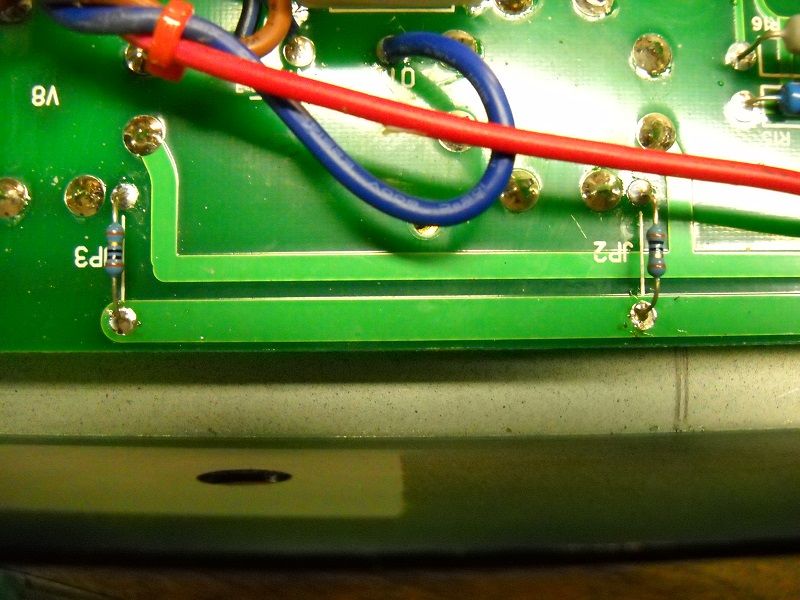
I have left the resistors above the board slightly to allow attachment of the leads and also to protect the board if one of the resistors gets taken out by excessive current. I am using 10 ohm 1/4 watt resistors. The 10 ohm allow better accuracy with most budget multimeters. The 1/4 watt rating is ok for my uses as it offers a margin of protection from a shorted tube taking out the OPT. You can use a 1 watt part here if you want. Be sure to get 1% resistors if you use the 1 ohm value. I selected two resistors as closely matched as I could get them.
Select a place to install the pin jacks. I installed these in a vertical line where they would not interfere with the removal of the PCB.
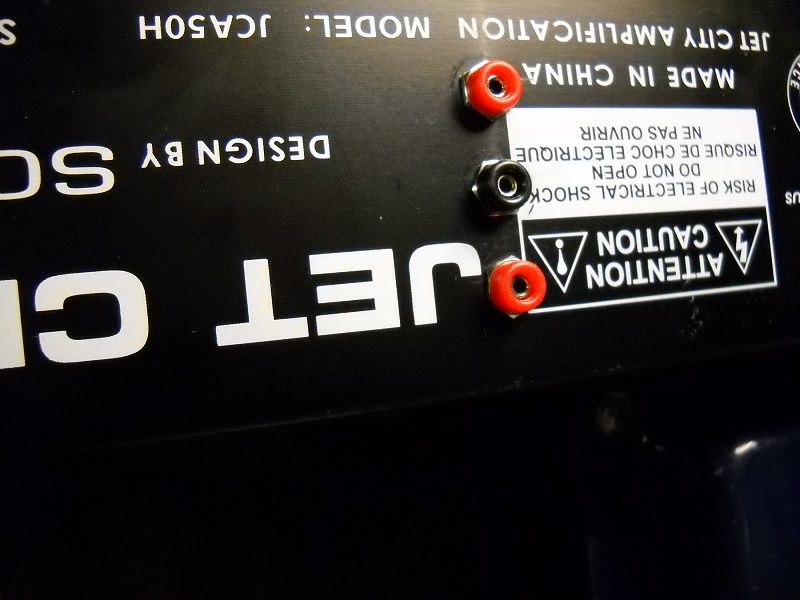
Here is a shot inside the chassis. You can see how the test jacks clear the PC board on the left.
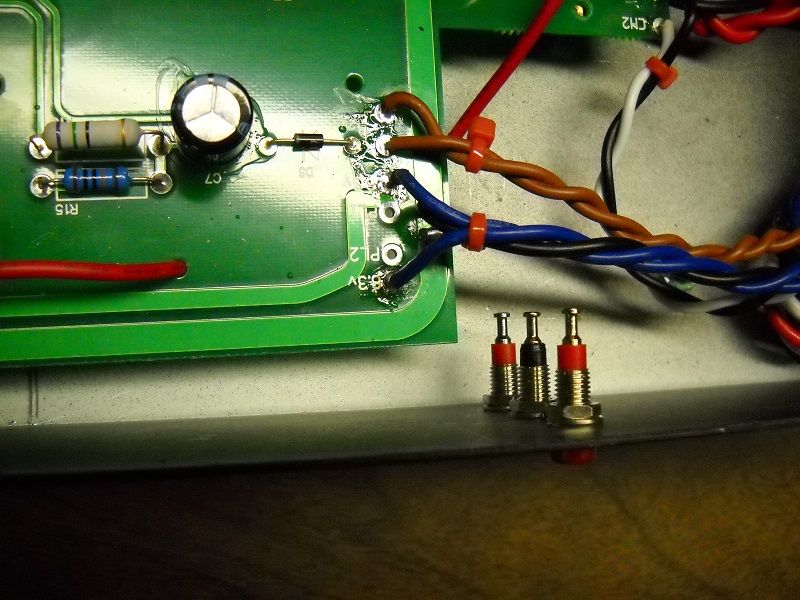
Select a location for the bias adjustment pots. I placed mine on the top of the chassis where they cannot be moved without taking the back panel off. Also I wanted the leads to be relatively short and to not use space on the back of the chassis. Note how the bias pots only have two wires attached to create a variable resistor.

One of the new bias pots will take the place of the original on board bias trimmer. Remove the trimmer from the board and connect the new bias pot in its place. This will be the bias adjustment for V8.
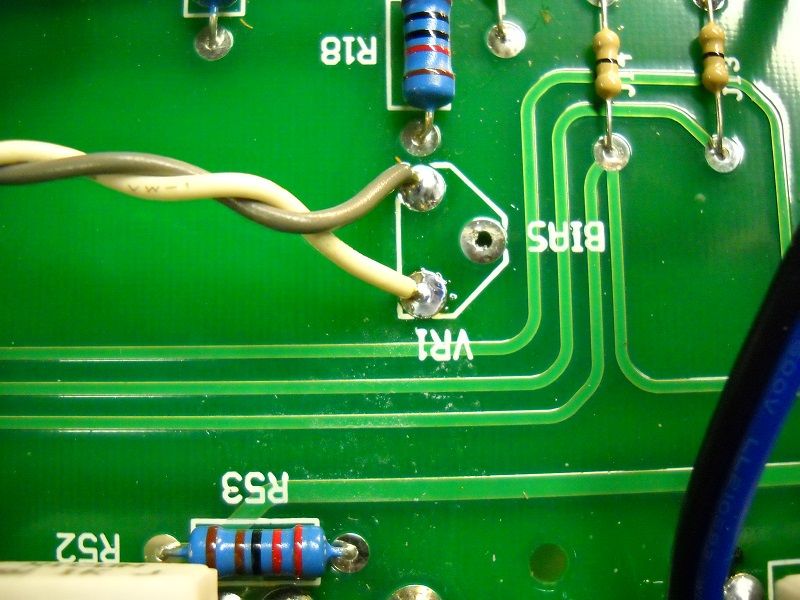
Unsolder and lift one end of R13 as shown. This will be where the new bias circuit will attach to bias V7.
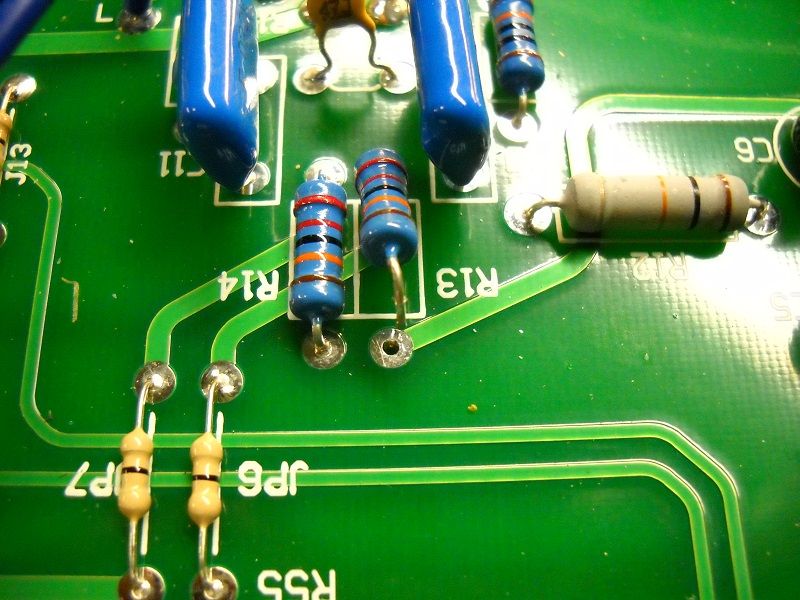
For the new bias circuit you will need to construct some way to hold the additional parts. I choose a small piece of perfboard to hold the components. It is attached to the PC board with double sided foam tape. The new circuit is a replica of the one already on the board. Refer to the JCA50 power amp schematic. The new circuit consists of a 15k resistor, a 16uf 100v capacitor and a 10k resistor. The new bias pot will connect to this circuit and also the end of R13 that was lifted in the previous step. The circuit we are copying consists of R11, C6 and R18. VR1 is replaced by the new bias pot. Here is the schematic for the new bias circuit:
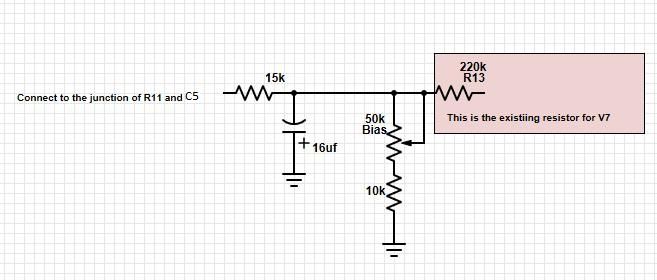
Here is a shot of the new circuit after being attached. The gray and white wires go to the new bias pot
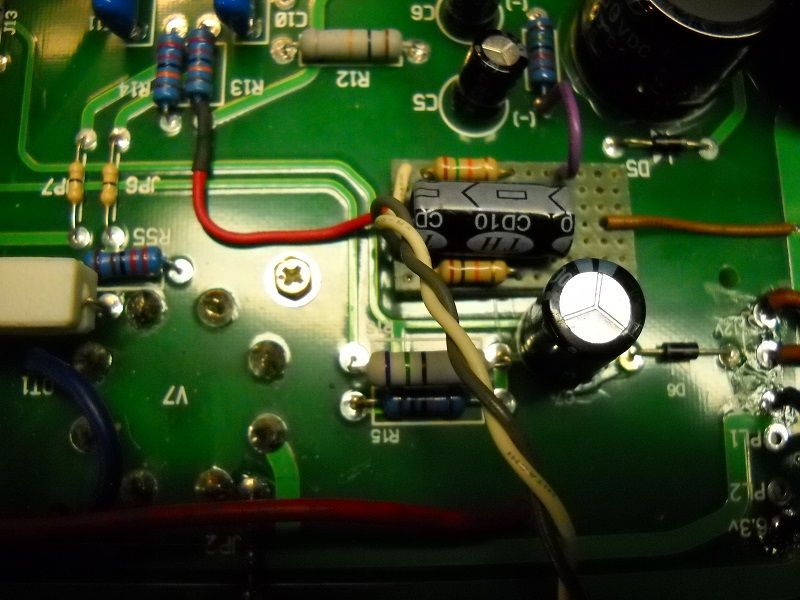
Testing
Remove all tubes from the amp if you have not already done so. Leave the standby switch OFF.
Power the amp on.
check between ground and pin 5 on V7 tube with a voltmeter
You should see a negative voltage between 63 VDC and 30 VDC
Rotate the V7 bias pot while reading the voltage. Make sure it is 60VDC or higher with the pot fully clockwise
Repeat testing for V8 bias
Here is a shot of the bias pots from the outside

If testing is successful attach the leads from the test points to the cathode sense resistors. The black test point connects to ground and the red test points connect to the cathodes of V7 and V8 as shown here.
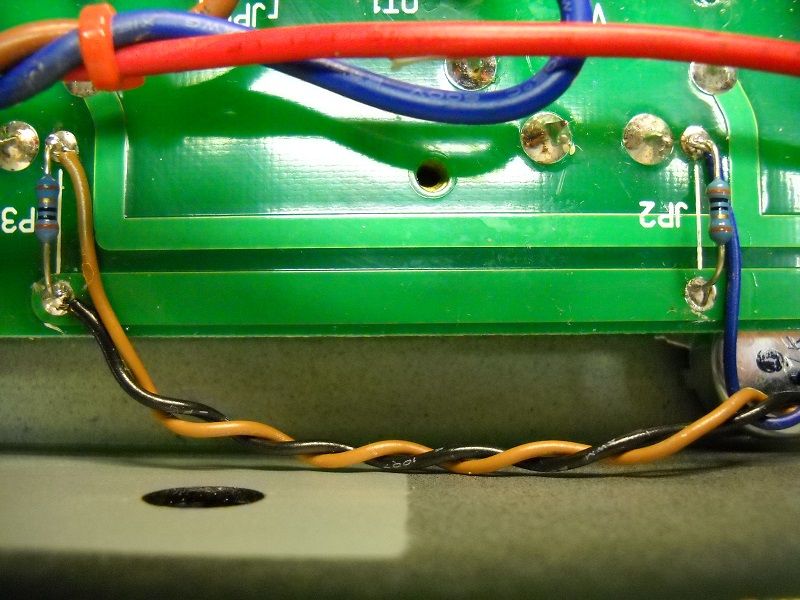
Using the new test points
Use your normal bias procedure for new tubes.
measure your B+ voltage(you only have to do this once) and calculate the bias current for your tubes (if you dont know how to do this STOP now)
With the power tubes out check pin 5 for -DCV turn bias pots fully clockwise.
Insert power tubes- power on
Use a voltmeter connected to the test points
the voltmeter will display millivolts if you used a 1 ohm cathode sense resistor.
so 35mv = 35ma current
If you used a 10 ohm resistor add a zero
350mv = 35ma current



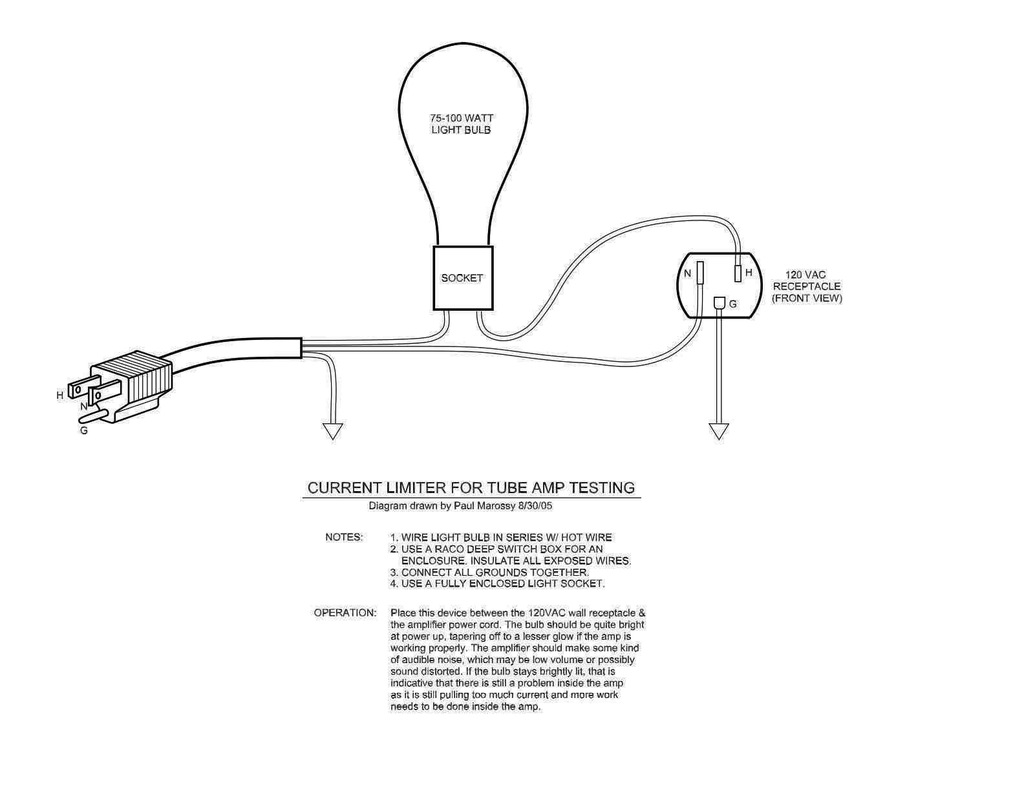
 the difference between a 470 ohm and a 1k screen grid resistance on high power amps 50 watts and over. The effects on smaller EL84 amps are distinctly audible as compression or a loss of high end detail. This might be beneficial to an overly bright amp to darken the tone.
the difference between a 470 ohm and a 1k screen grid resistance on high power amps 50 watts and over. The effects on smaller EL84 amps are distinctly audible as compression or a loss of high end detail. This might be beneficial to an overly bright amp to darken the tone.